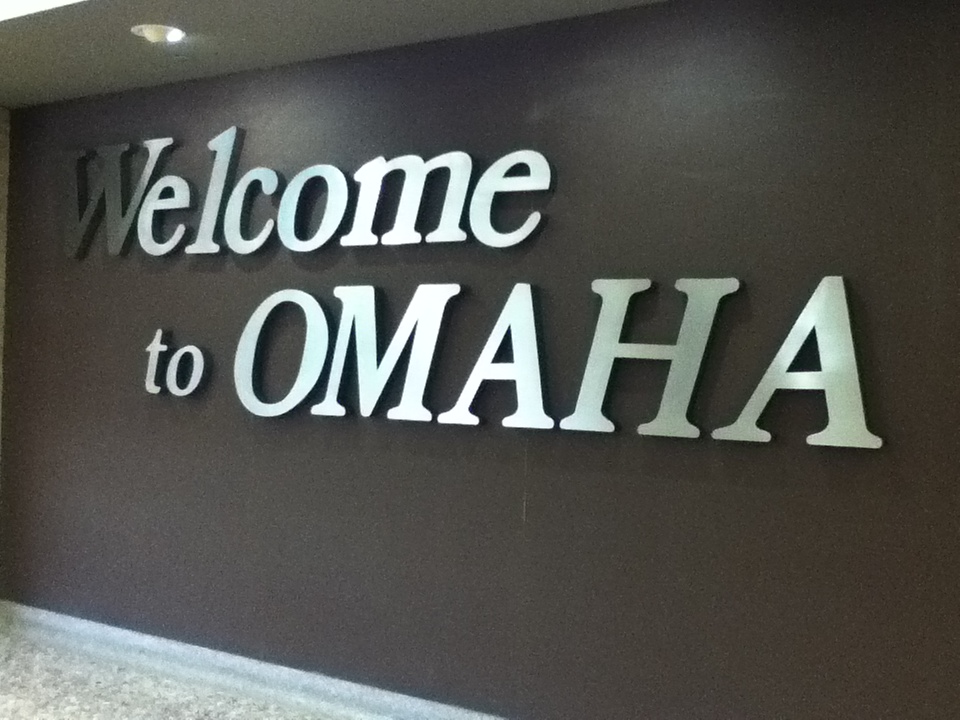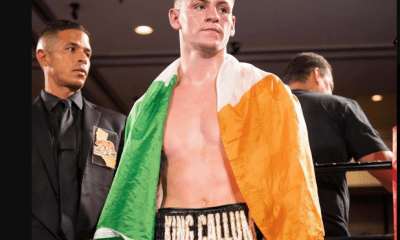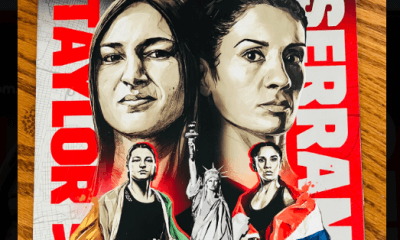Canada and USA
Before There Was Terence Crawford, There Were the Hernandez Brothers

THE FIGHTING HERNANDEZ BROTHERS — In Omaha where he was born and bred, Terence Crawford is a hot commodity. The undefeated junior welterweight, who risks his WBA and WBO belts against John Molina Jr. in Omaha on Dec. 10, has singlehandedly resuscitated boxing in his hometown, the city with which he proudly identifies. But there was a period before stagnation set in when fight fans in Nebraska’s largest city were treated to a steady diet of professional boxing shows. Many involved one or more of the Hernandez brothers who energized the Omaha boxing scene in the 1970s.
There were four of them. Listed in birth order, they were Ferd (often misidentified as Fred), Art, Chuck, and Dale. Their father, Perfecto “Pete” Hernandez, had a boxing background although documentation is skimpy. According to a 1969 Associated Press report, the elder Hernandez was a Golden Gloves champion who fought in smokers – “three rounds for two dollars” – during the Great Depression.
Pete Hernandez, who worked with livestock, moved around quite a bit. He resided in Boise, Idaho before moving to Sidney, Nebraska, a cattle ranching community in the western portion of the state near the Colorado border, where the two older boys were raised. Subsequent moves brought him to Omaha, to Pierre, South Dakota, where Dale was born, and finally, after all the kids had left home, to Cheyenne, Wyoming, his final stop.
In 1960, Ferd Hernandez won the National Golden Gloves welterweight title at Chicago Stadium. That year, the Omaha team, of which Ferd was a member, won the team title over the favored Chicago contingent. In news reports, Ferd was variously identified as a cook at the Army’s Sioux Ordnance Depot in Sidney and as a Sidney gas station attendant.
Ferd’s bout in the championship round was one of four televised live on ABC’s “Wednesday Night Fights.” The series, which ran from 1955 to 1960, was sponsored by Pabst Blue Ribbon beer. (Ponder that for a moment. Amateur boxing matches were televised on one of the Big Three national networks. Nowadays, U.S. amateurs toil in complete anonymity, save for the favored few that crack the newswires in an Olympic year.)
Ferd made his pro debut in Omaha and had three of his first five pro fights there. However, an ambitious promoter named Bill Miller lured him to Las Vegas where Ferd became one of the cornerstones of Miller’s “Strip Fight of the Week,” a series that ran at the Hacienda before settling in for a long run at the Silver Slipper.
Ferd became a headline attraction in Las Vegas in only his 11th pro fight and grew into one of the most popular sports personalities in the city. In his early Las Vegas fights he entered the ring wearing a sombrero, notwithstanding the fact that he didn’t speak Spanish and likely never set foot in Mexico. The practice was discontinued when Miller began importing boxers from Mexico to fight him.
The highlight of Ferd’s pro career came in his twenty-first bout when he scored a 10-round decision at the Hacienda over a long-past-his-prime Sugar Ray Robinson. That led to bouts with such notables as Nino Benvenuti and Luis Rodriguez. He retired with a record of 34-10-4. We will return to him later.
Art Hernandez, 11 months younger than Ferd, also fought the legendary Sugar Ray Robinson. Their bout at the Omaha Civic Auditorium in 1964 was scored a draw. That was one of twenty fights that Art had in Omaha rings, a record that would be nearly broken by the youngest Hernandez brother, Dale, who had nineteen.
An all-around athlete in high school, Art Hernandez won five Nebraska Golden Gloves titles before turning pro. He would be the most well-traveled of the brothers. Domestically, Art fought as far east as Philadelphia, as far west as Honolulu, as far south as Miami, and as far north as Seattle. He made five trips to France, two trips to Italy, and one trip to Denmark.
Although he got the short end of the stick, Art was likely at his best that night in 1969 when he tangled with former five-time world champion Emile Griffith in Sioux Falls, South Dakota, of all places. Griffith’s hand-picked referee, Lew Eskin, gave the nod to Hernandez, but Eskin was out-voted by the two local judges.
The next year, Art took it out of the judges’ hands when he met Phoenix journeyman Nate Williams in Omaha in a bout sanctioned for the North American Boxing Federation middleweight title. Art stopped Williams in the 11th round. Making matters sweeter, it was a clean sweep for the Hernandez brothers. Chuck and Dale won their respective matches on the undercard.
Charles “Chuck” Hernandez didn’t embrace boxing with the same fervor as his brothers. A reluctant warrior, he amassed a 7-10-1 record during his brief career. But Dale Hernandez, the baby of the bunch, 10 years younger than Ferd, loved a good scrap and had the potential to go far. A high school wrestling champion in South Dakota, he had what his older brothers lacked, a knockout punch.
Matched carefully, Dale won his first 28 pro fights, 19 by knockout. The skein ended in Boston Garden where he lost a hotly disputed split decision in a 12-round junior welterweight contest with local fan favorite Tony Petronelli. He lost his next bout too. At the Philadelphia Spectrum, he was outpointed by Mike Everett (the brother of ill-fated Tyrone Everett).
Dale Hernandez was so discouraged by this turnabout that he quit boxing and took a job as a meatcutter. But he returned after an 18-month hiatus and rang up six straight wins in Omaha rings before his career turned sour again. He retired with a record of 37-6.
– – –
As the big brother, Ferd Hernandez took an active interest in the doings of his younger siblings. They were always welcome at his home in Las Vegas and they visited him often. Dale hunkered down in Las Vegas in 1974 and had eight fights at the Silver Slipper with Ferd in his corner before returning to the Midwest. By then Ferd’s career was over, his retirement hastened by a detached retina.
With an assist from his former promoter Bill Miller, Ferd stayed active in boxing by obtaining a referee’s license. For a brief time, he was the top referee in the state. He refereed four world title fights, among them the 1975 match at the Las Vegas Convention Center between Muhammad Ali and Ron Lyle.
Ferd Hernandez and Muhammad Ali were old acquaintances. Ali, then known as Cassius Clay, won National Golden Gloves titles in 1959 and 1960. Ferd competed in both tournaments. In 1960, they were teammates on the Chicago squad that opposed a team of New York amateurs at Madison Square Garden. The 1960 edition of the annual intercity battle attracted a crowd of 15,295.
Refereeing didn’t pay the bills. For a time Ferd worked as a straight man in a burlesque show. When that fizzled out he became a bartender, first at the Flamingo and then at an off-Strip establishment called the Plush Horse. He usually worked the graveyard shift. On fight nights, Ferd could usually be found tending bar at the Plush Horse after completing his duties as a referee.
In a 24-hour town like Las Vegas, a graveyard shift bartender at a locals joint finds himself dealing to a lot of other bartenders. The good news is that bartenders are big tippers. The bad news is that their largesse comes with an unspoken obligation to reciprocate. On their off days, many bartenders make the rounds of other bars. By his own admission, Ferd was a party animal in his youth and he never completely shed his disposition to go out and kick up his heels. The folks on the athletic commission took notice and thought it prudent to phase out his refereeing career.
In 1996, Ferd took sick. The diagnosis was cirrhosis of the liver. When Art, who was married to a registered nurse, was apprised of the severity of Ferd’s illness, he did what he felt he had to do. He flew Ferd back to Omaha to live out his days. Ferd Hernandez died at his brother’s home on July 17, 1996, at age fifty-six.
There were no services, but back in Las Vegas several of Ferd’s friends arranged a memoriam at Sonny’s Saloon. The place, which gets good reviews on Yelp in the dive bar category, opened in 1938 and is still there, which in a city as ever-changing as Las Vegas ought to qualify it for inclusion on the National Register of Historic Places.
This reporter thought it appropriate to drop by the saloon before putting this story to bed. There are pictures of old Las Vegas on the walls, going back to the Dam building days of the Hoover administration, but nothing reflective of boxing. The bartender, an older man, amiable, his forearms covered with tattoos, seemed embarrassed that the place was so quiet. “Back in the day,” he said, “if you had popped in around midnight, you wouldn’t have found a seat at the bar; the place was really jumping.” I’m guessing the friends of Ferd Fernandez packed the joint when they gathered there to celebrate his life.
The great Omaha sports archivist Leo Adam Biga interviewed Art Hernandez before Art died in 2010 for a piece that ran in the defunct Omaha Weekly. Biga noted that Art Hernandez, who had risen to chief of security at Omaha’s Douglas County Hospital and was retired with a county pension, was the only brother that had remained in the Cornhusker State. Charles was living quietly in Des Moines, Iowa. Dale, a trucker by trade, was in prison in Wyoming on an assault conviction and estranged from the family.
The Hernandez brothers, wrote Biga, had more than the usual share of highs and lows inside and outside the ring. Indeed they did. None were nearly as talented as Terence Crawford, but all of the brothers with the exception of Charles achieved a top ten ranking and long before Crawford they left their mark on the Omaha boxing scene.
Check out more boxing news on video at The Boxing Channel.
-

 Featured Articles3 weeks ago
Featured Articles3 weeks agoVito Mielnicki Jr Whitewashes Kamil Gardzielik Before the Home Folks in Newark
-

 Featured Articles2 days ago
Featured Articles2 days agoResults and Recaps from New York Where Taylor Edged Serrano Once Again
-

 Featured Articles6 days ago
Featured Articles6 days agoFrom a Sympathetic Figure to a Pariah: The Travails of Julio Cesar Chavez Jr
-

 Featured Articles4 weeks ago
Featured Articles4 weeks agoCatching Up with Clay Moyle Who Talks About His Massive Collection of Boxing Books
-

 Featured Articles1 week ago
Featured Articles1 week agoCatterall vs Eubank Ends Prematurely; Catterall Wins a Technical Decision
-

 Featured Articles3 weeks ago
Featured Articles3 weeks agoMore Medals for Hawaii’s Patricio Family at the USA Boxing Summer Festival
-

 Featured Articles4 weeks ago
Featured Articles4 weeks agoRichardson Hitchins Batters and Stops George Kambosos at Madison Square Garden
-

 Featured Articles3 weeks ago
Featured Articles3 weeks agoCallum Walsh, Umar Dzambekov and Cain Sandoval Remain Unbeaten at Santa Ynez




















